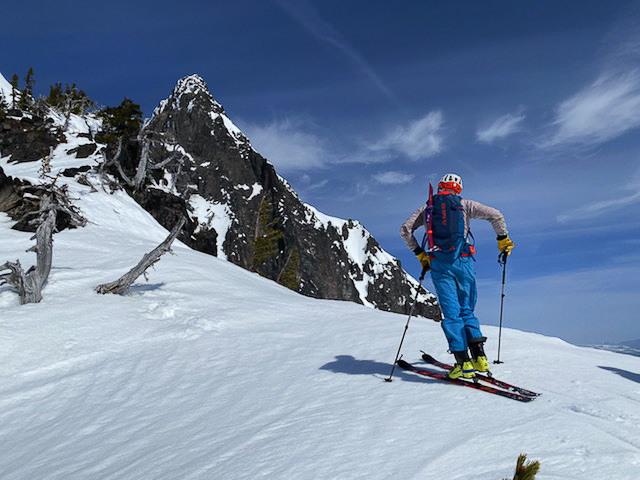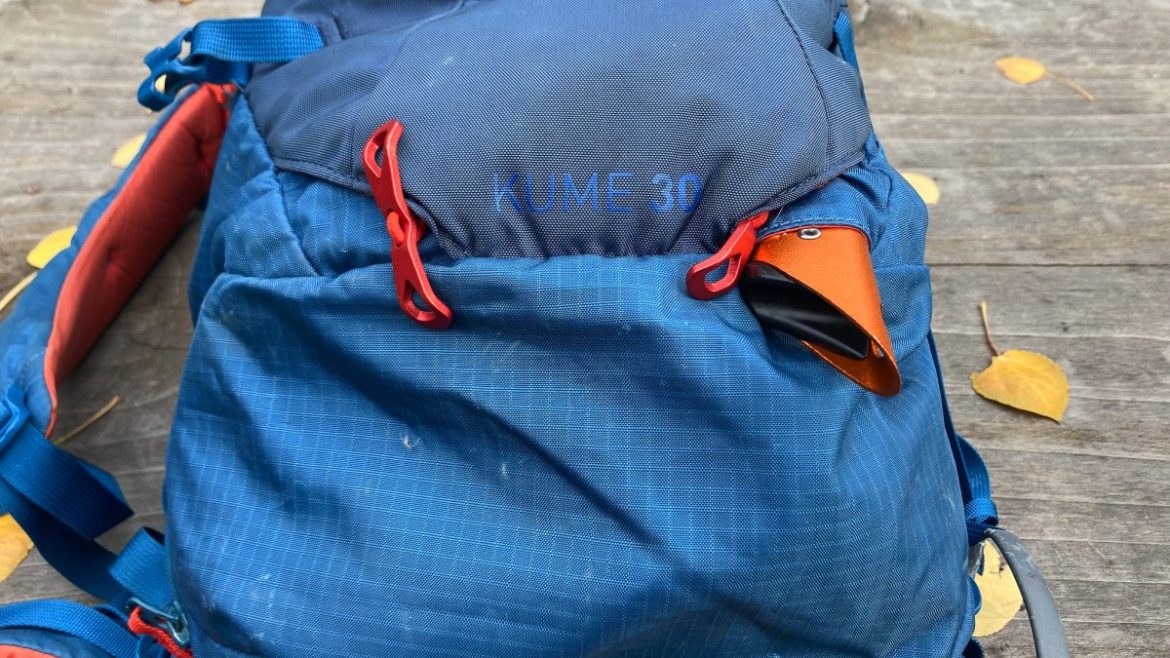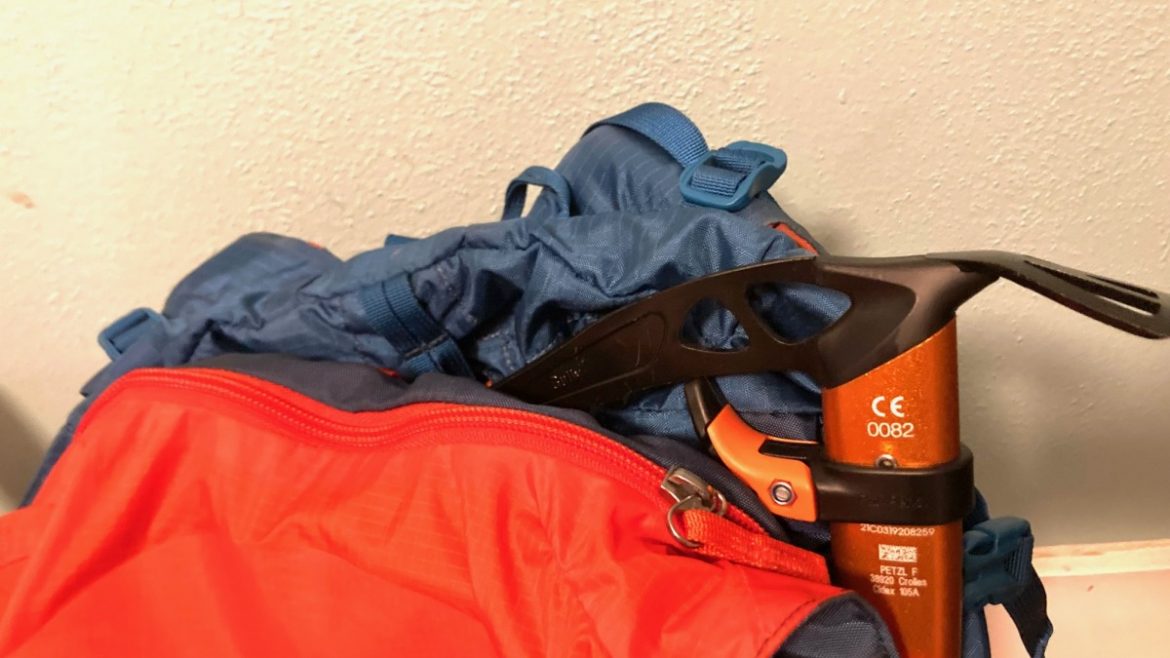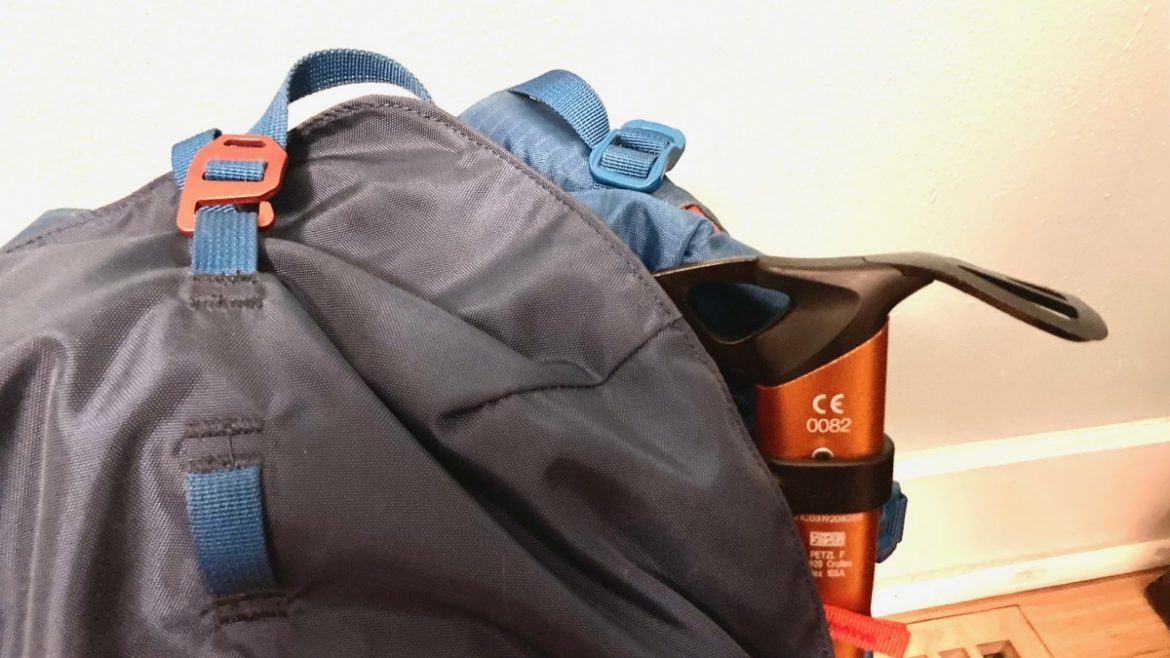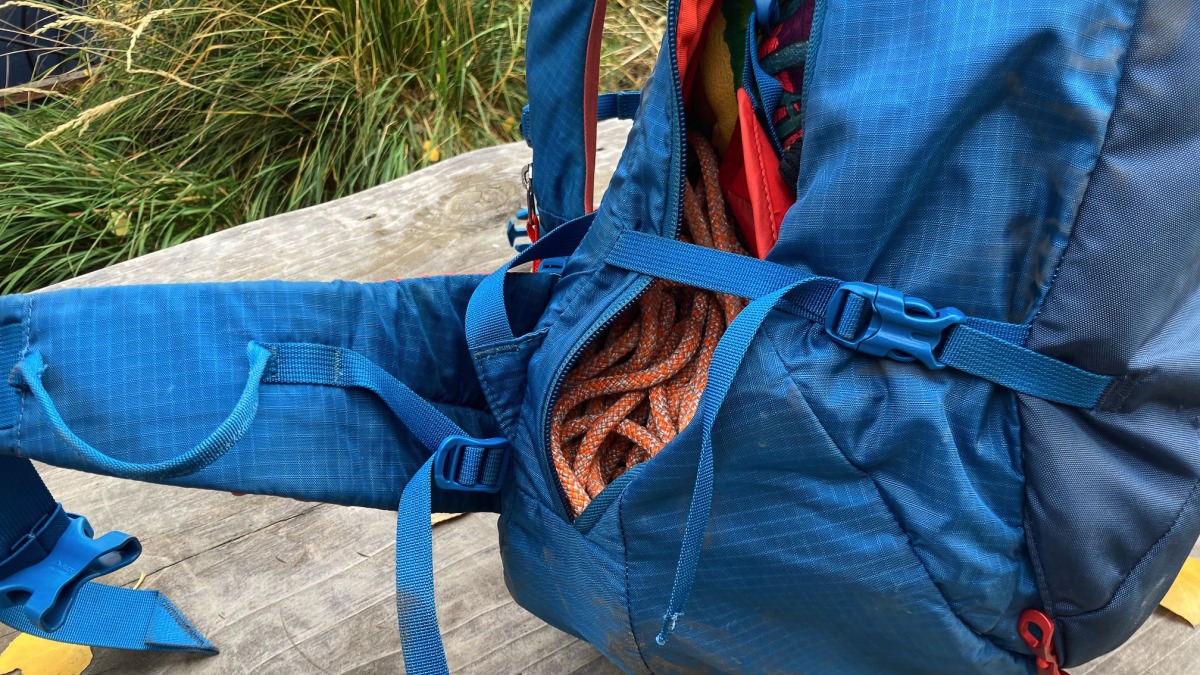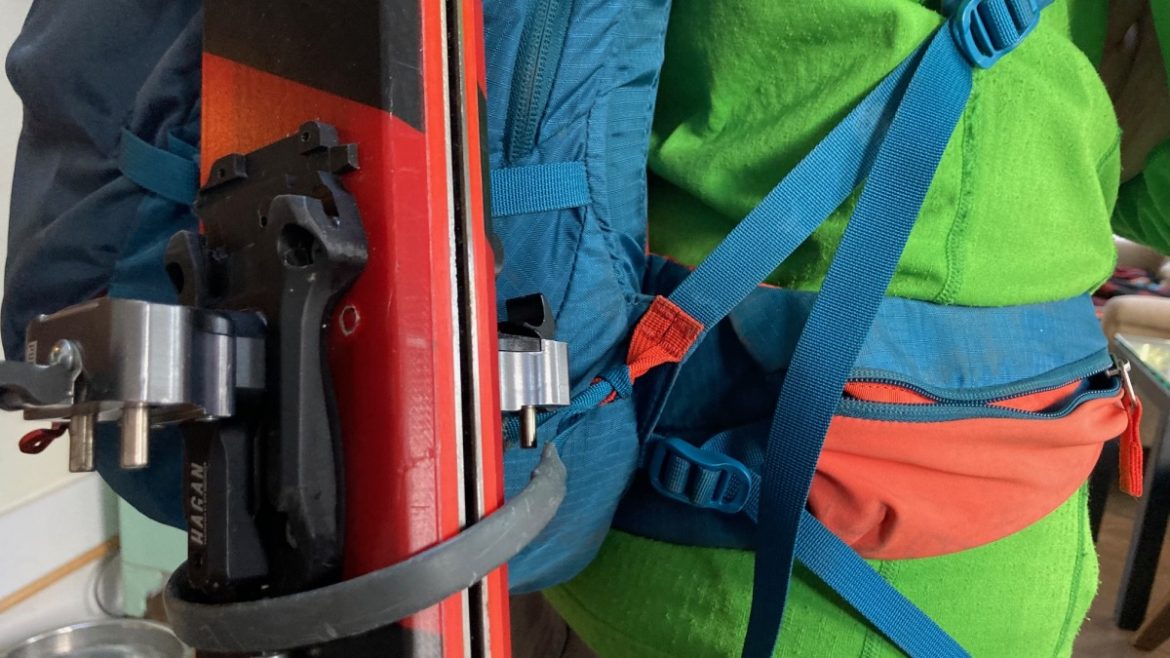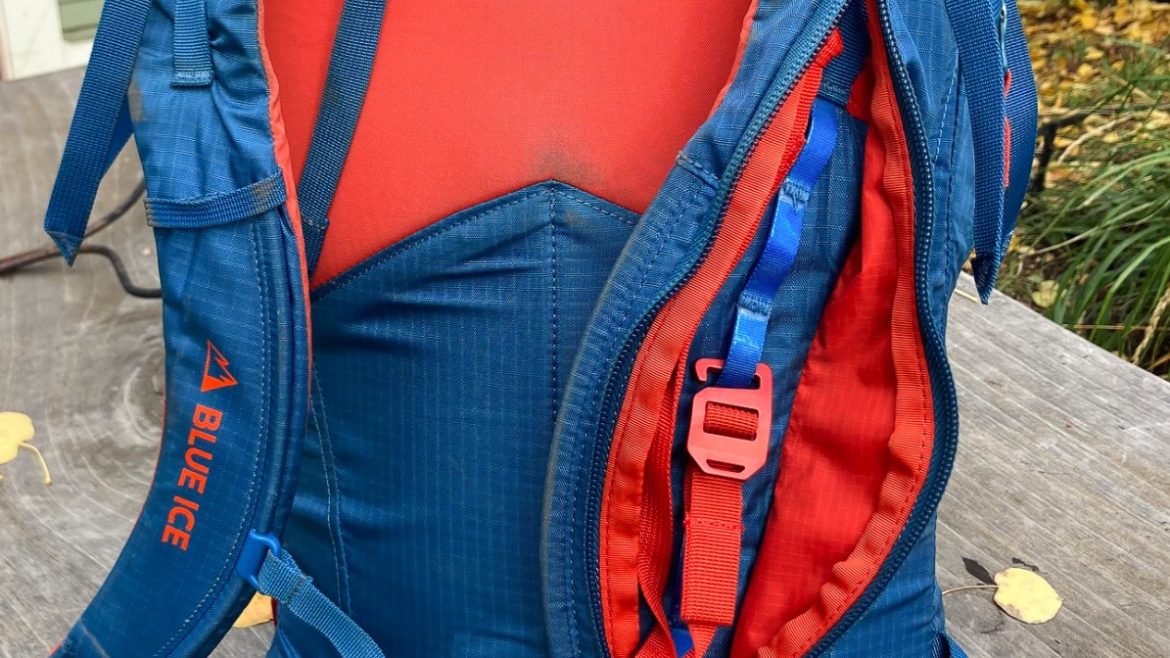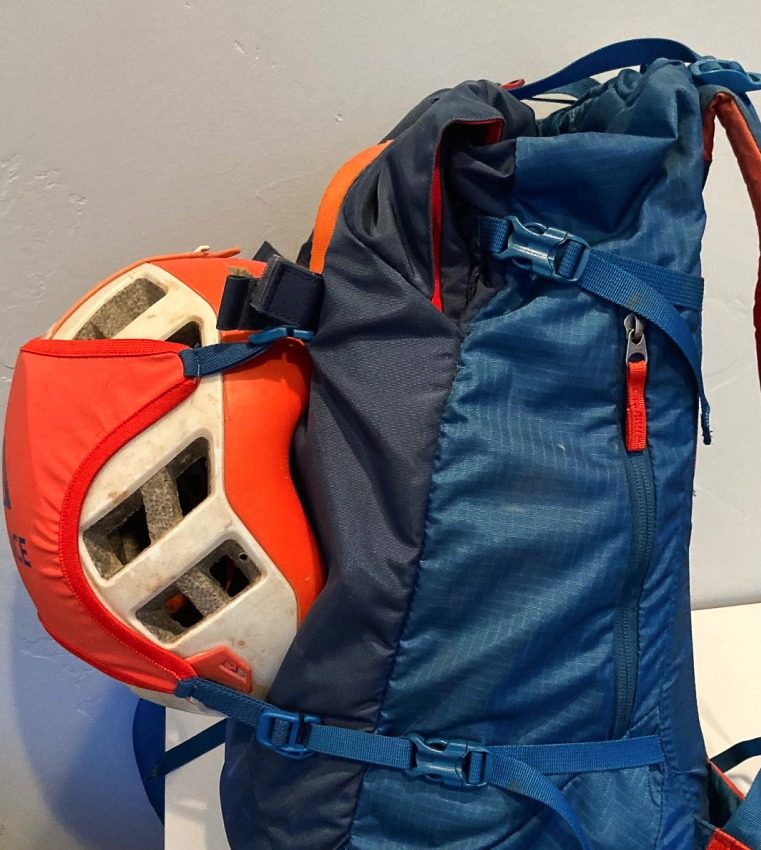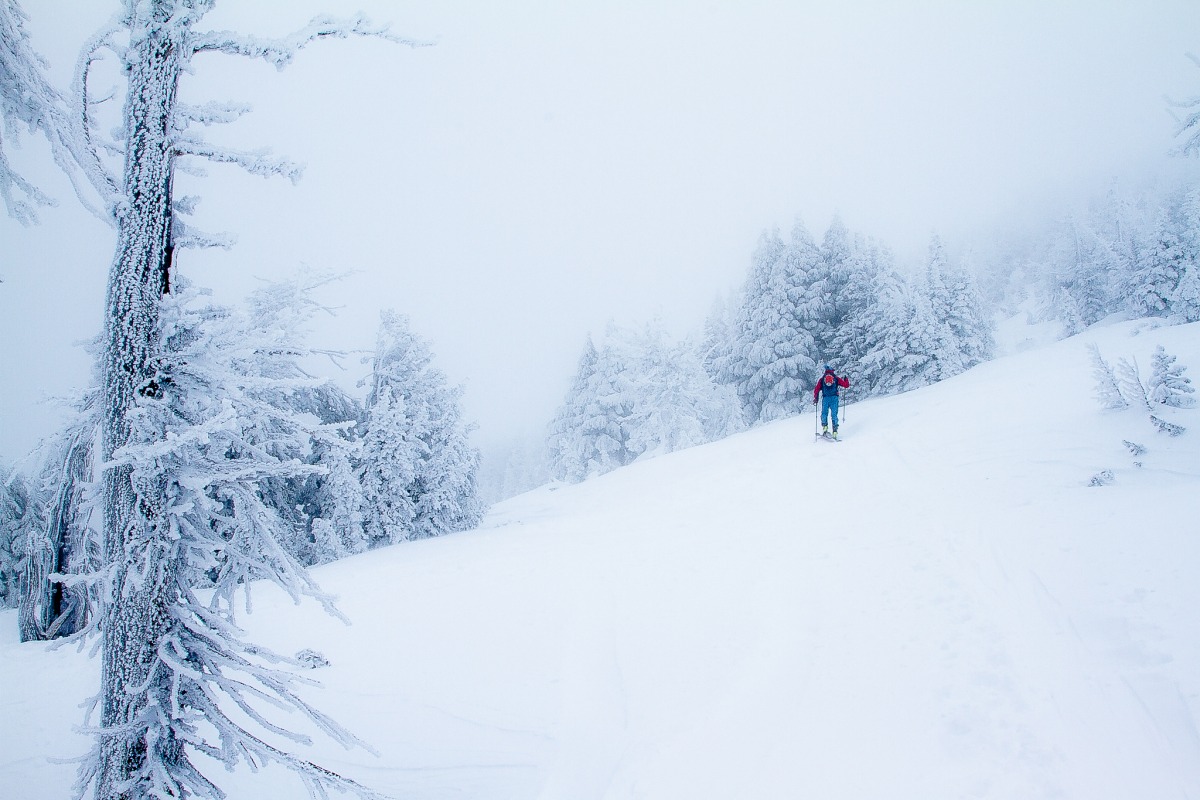
A perfect day for a tour with the Blue Ice Kume 30 tagging along for the view. Photo: Aidan Whitelaw
I’m starting to think that backpacks say a lot about who we are. Do you wear the 100-pocketed multi-zipper accessed, google-pouched, sunglasses-pouched, bells and whistles version or the minimalist, rip-stop nylon pouch with a drawstring closure up top, a suitable waist belt and shoulder straps and maybe some ice axe leashes for luxury?
So many backpacks to project your identity.
I used an Osprey Kode 30 for a season. Bomber construction. Comfortable. Nothing not to like, except that I rarely could determine a packing strategy to recall what items went where. I was that person digging around, pulling one of what seemed like 10 different zippers trying to find spare mittens.
Here’s the thing: My primary ski partner swore by the Kode and now covets the Kamber 30, a Kode offshoot.
I felt dazed and confused by the Kode’s dizzying options. As a result, I trended towards bare bones – and stayed there for about five years. My next daily driver pack was a rodent-chewed, bashed-about, much-loved Patagonia Ascensionist 35L. Designed for longer climbs, not skiing, the single compartment and minimalist zipper pocket up top was home for my hauled-along gear. With the main compartment as my only option for storage, I always knew where to look: food and gloves up top, water bottles stored somewhere in the middle. Puffy and spare mittens shoved way down. And only one access point – from the top.
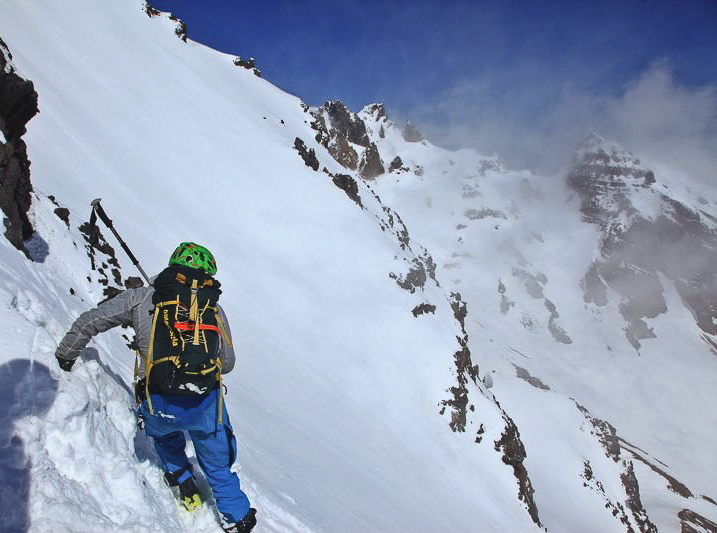
The much loved Ascensionist 35 is now only broken out for climbing duty. And really, in this instance, not such an external yard sale. Photo: Aidan Whitelaw.
This stylized nylon tube suited me. But to say I wasn’t that person unpacking and repacking and unpacking again looking for the small stuff, the headlamp or dry beanie, would be a lie. I also suffered mild-beratement from some partners for my occasional yard sale of items secured outside my Ascensionist.
When I started seeing simple pack designs with avy gear pockets and a side access zipper to the main compartment, I suffered pack envy.
I realized I was looking for something a bit more organizationally compliant than the Alpinist 35L for skiing. Blue Ice, that plucky Chamonix / Salt Lake City company with alpinist DNA, came to my organizationally challenged rescue.
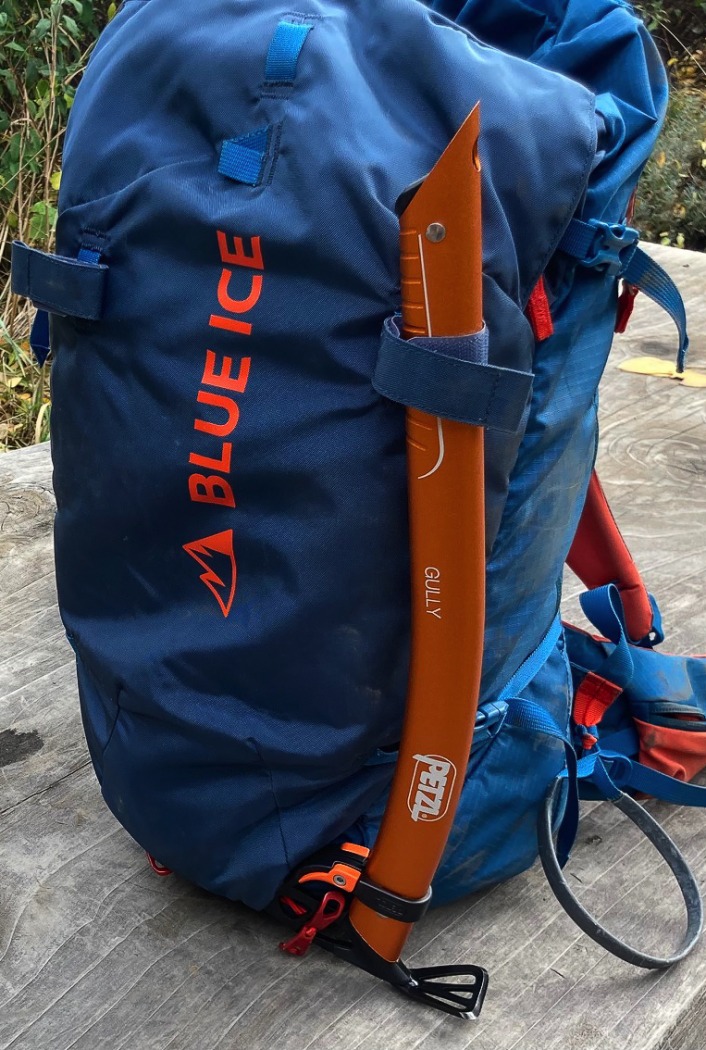
One pack to rule them all? I’m getting close. Here we see the backside of the Kume 30 – it features two external axe attachments.
The Kume 30L from Blue Ice hits all the high notes of keeping my ski gear sorted and tidy without the scores-of-pockets-and-zippers overkill. It sports a single main compartment – like my beloved Ascensionist, with the option of dividing the lower third with a “false bottom”, a simple piece of hardy yet removable fabric creating a cubby to store crampons, a skinny rope, and skins.
For those all-important avalanche safety tools, there’s a zipper-accessed safety-tool pocket with slots for a probe, shovel handle, and blade.
Integrated into the main compartment is a hydration bladder sleeve. An easily accessible internal zippered pocket sits atop the main compartment with room for sunglasses, repair kit, snacks, and phone. (This is not fleece-lined for those seeking a stash spot for goggles.) The Kume’s top cinches tight with a clean pull-cord system, and a storm-proof cover folds over to keep the goods dry during snowfall.
The main theme here is “just enough,” as in “just enough” storage and bells and whistles to keep things organized and accessible without the yard sale I may, or may not, have been known for. The upside with the Kume 30, there’s simply not the organization-overreach I found with the Kode’s design.
I can attach two ice tools quickly and cleanly on the back of the Kume 30. Additionally, adjacent to each side of the avy tool pocket is a spot for an axe. The axe slides into a sleeve with the bottom spike peeking out the bottom – there’s no need to worry about rips. The pack’s lid secures the axe head. The savvy thing is that the axes, when stored in this fashion, are retrievable while wearing the pack.
The Kume’s suspension system is reliably basic: padded shoulder straps, a robust padded waist belt and back panel, and adjustable sternum strap—no reinventing the wheel here. The right side of the hip belt boasts a single small zipper pocket ideal for gels, bars, and lip balm. Sewn to the left side of the waist belt is a gear loop. Internally, there is a removable wire stay. I removed the stay after the first few uses. That was premised on removing the Alpinists’ 35L frame early on in that pack’s life. I find mid-volume backpacks do not require a frame’s support to carry, climb, or ski well.
In the design of the Kume, Blue Ice also has skiers thinking of technical lines in mind.
A locking two-way zipper runs nearly the length of the pack’s left side. Stashing a rope in the lower third of the main compartment is simple. A 60m RAD line, or 30m 7.9 rope, will snake nicely into the Kume’s bottom-third, where there’s a sewn-in reinforced loop to clip one end of the rope. The waistbelt’s gear loop is an obvious connecting point for the opposite end of the rope. Unclip the rope from the gear loop to feed it out – all while wearing the pack. (This requires “stacking” the rope inside the backpack in an organized manner.)
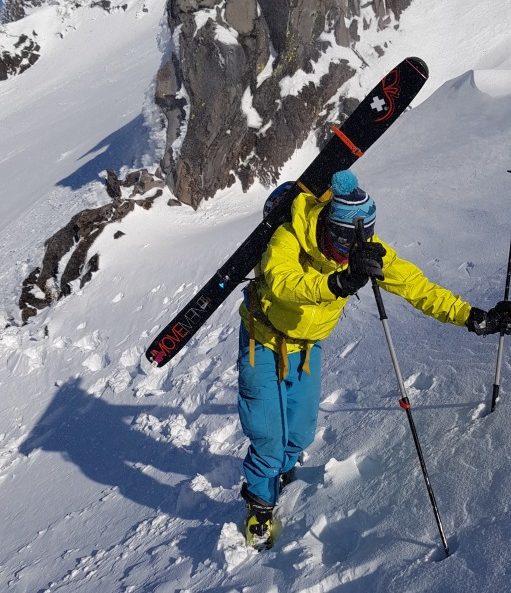
The Kume comes with multiple ski carry options. Here, the diagonal carry is a skis-on-skis-off system without removing the pack.
The Kume 30 offers multiple ski carry options. The A-frame method is basic and solid. The Kume also has a built-in diagonal carry system. An adjustable tether to secure the ski’s uppers is stashed in the left shoulder strap. (This system is similar to what some skimo racers use to affix skis quickly on their packs.) Ski tails slot through a flexible loop girth-hitched to the pack’s bottom right. (The pack arrives with two sizes of loops, one for wider skis, and a smaller loop for the skinny side of the ski width spectrum.) I regularly use this carry system for short duration boot packs when I do not want to remove the pack and want a more efficient transition. The carry system works fine with my lighter weight Movement Alp Track 100s, but I feel a slight tug on the left shoulder strap with the skis attached. After a full winter of use, I only tap into two of the four ski carry options.
I’ll link to a Blue Ice video here to clarify the pack’s several ski carry options.
My polarized history of ski packs, from Kode to Ascesionist, was like going from the Bois Doré to lean-to. The Kume 30 meets all my backpack requirements; it’s more balanced for my needs – like a modernist cabin with a wood-stoked sauna.
But, like all things gear, I’d like to see a few minor changes. First, the Kume 30 does have a detachable helmet-carry, and it’s secure with a helmet tucked in. However, with the helmet removed, the helmet carry can become loose and potentially lost. With the corners as the helmet carry’s four points, I’ve found that the helmet carry is occasionally dangling by a single contact point without the helmet inserted. I stash the helmet carry in the pack or my jacket pocket when not in use. I like how some companies (Osprey is among them) feature a built-in helmet carry stash pocket. In other words, a deployable helmet carry would be sweet. The Kume’s helmet carry can not be used to carry a helmet atop the pack.
Lastly, is a feature I’d like to see incorporated into all ski packs. Black Diamond hit a home run in the development of their Distance packs and Cirque 22. Not unlike Dynafit and Camp and their legacy of skimo race packs, BD began incorporating ultrarunner vest pockets on their fast and light packs. I love the ease of accessing food or taking a pull of water from a soft flask while on the move. You don’t need to be racing to know these are welcome efficiencies. If companies could create a modular system of pockets for shoulder straps, this, in my eyes, would be a welcome accessory.
The Kume comes in two sizes; this 30L and a roomier 38L volume option. The 38L, which is also in my new pack quiver, is a great hut-hut overnight pack, or something for those cold days and extra warm layers are needed.
The Kume 30L retails for $169.95.
Weight: approx 1145g
Material: Ripstop Robic Nylon 210D
Jason Albert comes to WildSnow from Bend, Oregon. After growing up on the East Coast, he migrated from Montana to Colorado and settled in Oregon. Simple pleasures are quiet and long days touring. His gray hair might stem from his first Grand Traverse in 2000 when rented leather boots and 210cm skis were not the speed weapons he had hoped for. Jason survived the transition from free-heel kool-aid drinker to faster and lighter (think AT), and safer, are better.

